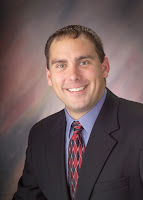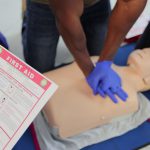Cardiac arrests kill 300,000 people in North America each year, and approximately 1,000 patients experience cardiac arrest annually in the Pittsburgh area. Cardiopulmonary resuscitation (CPR) can save lives, but those who survive can be left with severe neurological impairments if they don’t get the right kind of care.
| Clifton Callaway, M.D. |
A program started five years ago by Jon Rittenberger, M.D., and Clifton Callaway, M.D., at UPMC Presbyterian is helping those patients and significantly boosting survival rates. The Post Cardiac Arrest Service (PCAS), a multidisciplinary service, provides specialized care to patients who survive cardiac arrest with CPR. Recently, PCAS treated its 200th patient.
Cardiac arrest can cause severe brain injury, leading to permanent neurological damage. Brain temperature during the first 24 hours after resuscitation from cardiac arrest has a large effect on survival and neurological recovery.
PCAS uses therapeutic hypothermia to cool the body temperature to 92 degrees Fahrenheit and slowly warm the patient as the brain and body recover, reducing the risk of further brain damage. KDKA –TV news anchor Susan Koeppen received the treatment after she suffered a cardiac arrest last fall. Her story has been covered extensively throughout the region.
 |
| Jon Rittenberger, M.D. |
“Hypothermia and brain-oriented care is very effective with people who are comatose and not following commands after receiving CPR. Seizures are common in these patients, but most patients do not convulse. The brain is seizing and using up oxygen, causing more damage to an already injured brain. Few hospitals can continuously monitor for these seizures and aggressively treat them.” said Dr. Rittenberger. Drs. Callaway and Rittenberger work with partners in Emergency Medical Services, the Heart and Vascular Institute, Critical Care Medicine, Rehabilitation, and Neurology.
“Before we did this, about 30 percent of people would survive if they made it to the hospital,” Dr. Callaway said. “Over the past decade, we are now looking at survival rates of more than 40 percent.”








